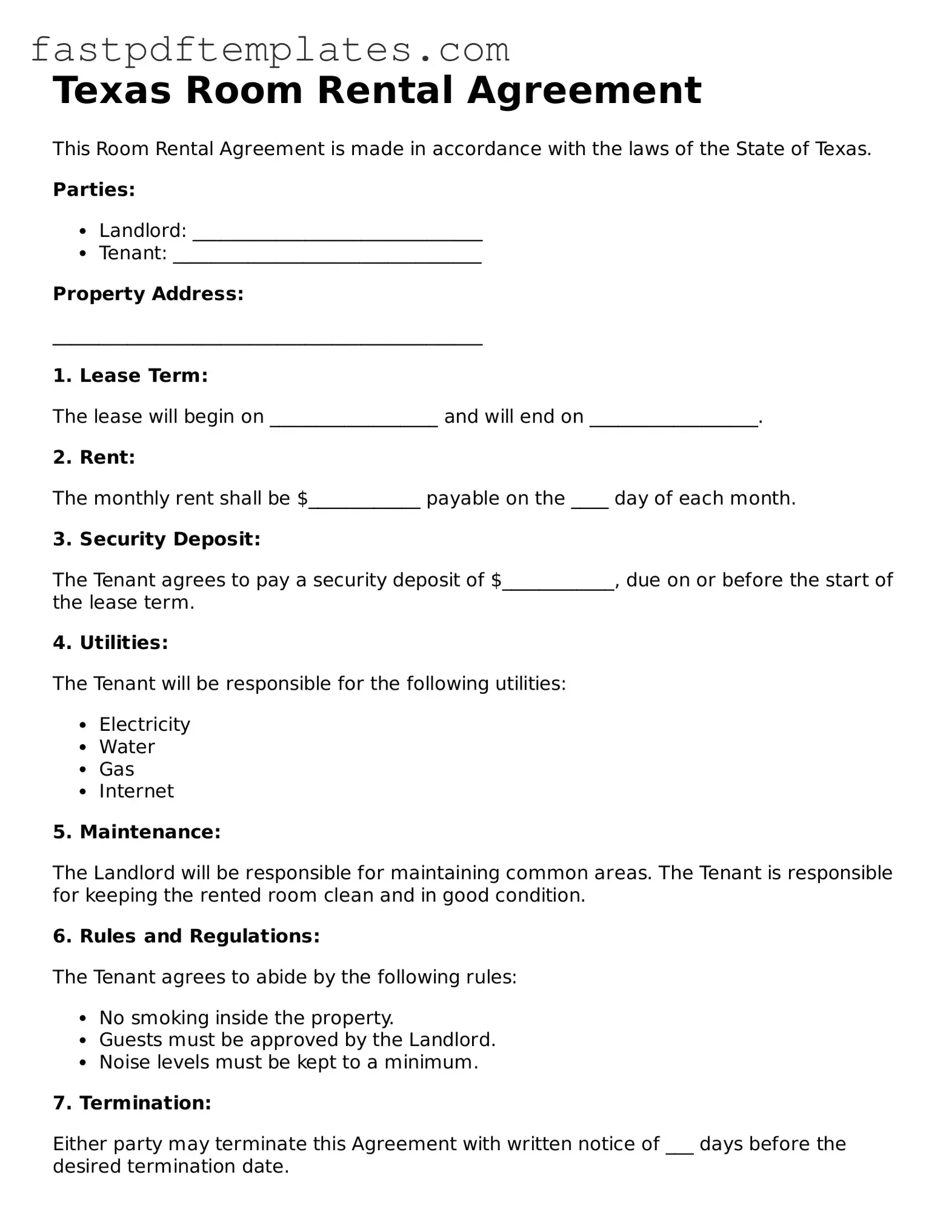Texas Room Rental Agreement
This Room Rental Agreement is made in accordance with the laws of the State of Texas.
Parties:
- Landlord: _______________________________
- Tenant: _________________________________
Property Address:
______________________________________________
1. Lease Term:
The lease will begin on __________________ and will end on __________________.
2. Rent:
The monthly rent shall be $____________ payable on the ____ day of each month.
3. Security Deposit:
The Tenant agrees to pay a security deposit of $____________, due on or before the start of the lease term.
4. Utilities:
The Tenant will be responsible for the following utilities:
- Electricity
- Water
- Gas
- Internet
5. Maintenance:
The Landlord will be responsible for maintaining common areas. The Tenant is responsible for keeping the rented room clean and in good condition.
6. Rules and Regulations:
The Tenant agrees to abide by the following rules:
- No smoking inside the property.
- Guests must be approved by the Landlord.
- Noise levels must be kept to a minimum.
7. Termination:
Either party may terminate this Agreement with written notice of ___ days before the desired termination date.
8. Governing Law:
This Agreement shall be governed by the laws of the State of Texas.
Signatures:
Landlord: _______________________________ Date: ___________
Tenant: _________________________________ Date: ___________
